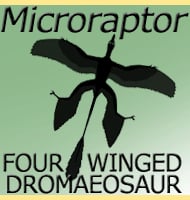In Depth
Niobrarasaurus is a genus of medium/large nodosaur that lived in North America during the Late Cretaceous. Other than this Niobrarasaurus would have been an unremarkable dinosaur genus were it not for one thing, and this is that the first (and at the time of writing only) fossils of this dinosaur are known from the Niobrara Formation of Kansas. As anyone already familiar with this fossil bearing rock formation will tell you, this is a marine deposit that back in the late Cretaceous was part of the submerged bottom of the Western interior seaway, a shallow sea that submerged most of the middle of the North American continent.
So the question is, how did a large number of nodosaurs of the same genus, squat quadrupedal dinosaurs adapted for life on land, all end up with their bodies lying at the bottom of the sea? Well nodosaurs were best adapted for browsing upon lush low growing vegetation, the kind which is usually absent from beaches, so it is unlikely that they had become trapped by a tide. A Tsunami could be one dramatic explanation, sweeping across a small group of Niobrarasaurus near to the coast and pulling them out to sea when the surge receded back. Another possibly more likely explanation could be that a group of Niobrarasaurus might have been trying to forge a river that was swollen with flood water, and that the weaker members of the group, unable to cope with the increased current were drowned and swept downstream and out to sea.
The precedent for these kinds of major flooding events are known from other areas of North America where bone beds of several hundred to even several thousands of individual dinosaurs have been accumulated together as a result of flood deposits.
Further Reading
- The dinosaurs of the Niobrara Chalk Formation (Upper Cretaceous, Kansas). - Journal of Vertebrate Paleontology 15(2):275-297. - K. Carpenter, D. W. Dilkes & D. B. Weishampel - 1995. - Notice of the transfer of the holotype specimen of Niobrarasaurus coleii (Ankylosauria; Nodosauridae) to the Sternberg Museum of Natural History. - Transactions of the Kansas Academy of Science 107(3-4): 173-174. - M. J. Everhart - 2004. - A new nodosaur specimen (Dinosauria: Nodosauridae) from the Smoky Hill Chalk (Upper Cretaceous) of western Kansas. - Transactions of the Kansas Academy of Science 108(1/2): 15-21. - M. J. Everhart & S. A. Hamm - 2005. - Field notes regarding the 1930 discovery of the type specimen of Niobrarasaurus coleii, Gove County, Kansas. - Transactions of the Kansas Academy of Science 110(1/2): 132-134. - V. B. Cole - 2007. - Skull of the ankylosaur Niobrarasaurus coleii (Ankylosauria: Nodosauridae) from the Smoky Hill Chalk (Coniacian) of western Kansas. - Transactions of the Kansas Academy of Science, 110(1/2): 1-9 - K. Carpenter & M. J. Everhart - 2007.










